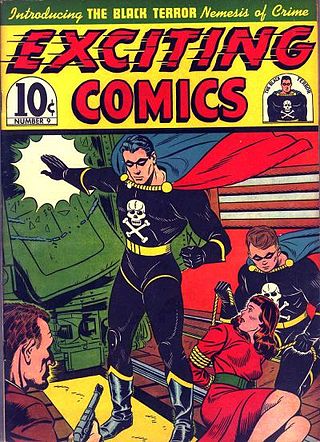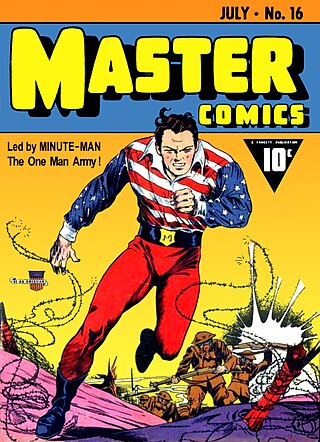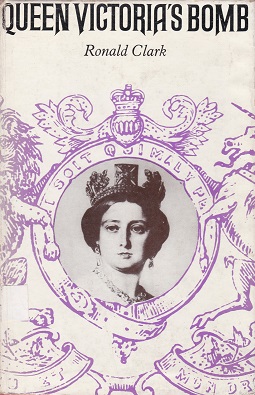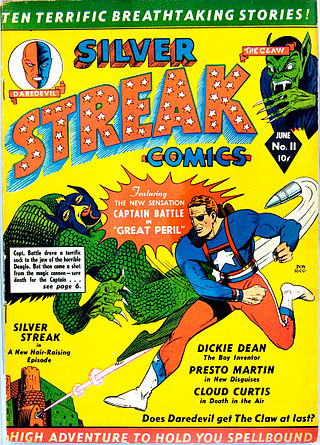
Sword and sorcery (S&S) is a subgenre of fantasy characterized by sword-wielding heroes engaged in exciting and violent adventures. Elements of romance, magic, and the supernatural are also often present. Unlike works of high fantasy, the tales, though dramatic, focus on personal battles rather than world-endangering matters. Sword and sorcery commonly overlaps with heroic fantasy.

The League of Extraordinary Gentlemen (LoEG) is a comic book series co-created by writer Alan Moore and artist Kevin O'Neill which began in 1999. The series spans four volumes, an original graphic novel, and a spin-off trilogy of graphic novella. Volume I and Volume II and the graphic novel Black Dossier were published by the America's Best Comics imprint of DC Comics. After leaving the America's Best imprint, the series moved to Top Shelf and Knockabout Comics, which published Volume III: Century, the Nemo Trilogy, and Volume IV: The Tempest. According to Moore, the concept behind the series was initially a "Justice League of Victorian England" but he quickly developed it as an opportunity to merge elements from many works of fiction into one world.
Monsieur Zenith the Albino is an ambiguous villain created by writer Anthony Skene for the "Sexton Blake" series of detective pulp fiction.
Bangsian fantasy is a fantasy genre which concerns the use of the afterlife as the main setting within which its characters, who may be famous preexisting historical or fictional figures, act and interact. It is named for John Kendrick Bangs (1862–1922), who often wrote it.

The Black Terror is a fictional comic book superhero who originally appeared in Exciting Comics #9, published by Nedor Comics in January 1941. The character was popular, and on the strength of the Black Terror's sales, Nedor made Exciting Comics a monthly magazine starting with issue #11.

Minute-Man is a superhero appearing in comics published Fawcett Comics and later DC Comics.
The Ghost is a fictional character, a superhero that appeared in comic books published by Nedor Comics. His first appearance was in Thrilling Comics #3. The character is loosely based on the pulp hero created by G.T. Fleming-Roberts, who was variously known as the Ghost, the Ghost Detective, and the Green Ghost.
The American Eagle is a superhero from the Golden Age of Comics. He first appeared in America's Best Comics #2, published by Nedor Comics, an imprint of Standard Comics.
Peter M. Coogan is the Communication Lab Coordinator and co-founder and co-chair of the Comics Arts Conference, which runs during the San Diego Comic-Con International and San Francisco WonderCon.

The League of Extraordinary Gentlemen, Volume One is a comic book limited series written by Alan Moore and illustrated by Kevin O'Neill, published under the America's Best Comics imprint of DC Comics in the United States and under Vertigo in the United Kingdom. It is the first story in the larger League of Extraordinary Gentlemen series. The story takes place in 1898 in a fictional world where all of the characters and events from Victorian literature coexist. The characters and plot elements borrow from works of writers such as Jules Verne, Sir Arthur Conan Doyle, Bram Stoker, H. G. Wells and Robert Louis Stevenson.

Superhero fiction is a genre of speculative fiction examining the adventures, personalities and ethics of costumed crime fighters known as superheroes, who often possess superhuman powers and battle similarly powered criminals known as supervillains. The genre primarily falls between hard fantasy and soft science fiction spectrum of scientific realism. It is most commonly associated with American comic books, though it has expanded into other media through adaptations and original works.

John Picacio is an American artist specializing in science fiction, fantasy and horror illustration.

Queen Victoria's Bomb is a steampunk novel by Ronald W. Clark, published in 1967. Its plot surrounds the invention of a nuclear weapon in the Victorian era which might be used to win the Crimean War.

Win Scott Eckert is an author and editor, best known for his work on the literary-crossover Wold Newton Universe, created by author Philip José Farmer, but much expanded-upon subsequently by Eckert and others. He holds a B.A. in Anthropology and a Juris Doctor.

MonkeyBrain Books is an independent American publishing house based in Austin, Texas, specialising in books comprising both new content and reprinting online, international, or out-of-print content, which show "an academic interest," but which "reach a popular audience as well."

Captain Battle is a fictional hero and one of the features in Lev Gleason's Silver Streak Comics, from the period known as the "Golden Age of Comic Books". The character is a wounded World War I veteran who has devoted his life to stopping war. He was created by Carl Formes and Jack Binder.
The Raven is a fictional superhero character who first appeared in the Ace Comics title Sure-Fire Comics. He is based on the pulp hero "The Moon Man" published by Periodic House, the pulp publisher connected to Ace Comics.

Urban Gothic is a subgenre of Gothic fiction, film horror and television dealing with industrial and post-industrial urban society. It was pioneered in the mid-19th century in Britain, Ireland and the United States and developed in British novels such as Robert Louis Stevenson's Strange Case of Dr Jekyll and Mr Hyde (1886), and Irish novels such as Oscar Wilde's The Picture of Dorian Gray (1890), and Bram Stoker's Dracula (1897). In the twentieth century, urban Gothic influenced the creation of the subgenres of Southern Gothic and suburban Gothic. From the 1980s, interest in the urban Gothic revived with books like Anne Rice's Vampire Chronicles and a number of graphic novels that drew on dark city landscapes, leading to adaptations in film including Batman (1989), The Crow (1994) and From Hell (2001), as well as influencing films like Seven (1995).

Out of This World Adventures was an American pulp magazine which published two issues, in July and December 1950. It included several pages of comics as well as science fiction stories. It was edited by Donald A. Wollheim and published by Avon. Sales were weak, and after two issues Avon decided to cancel it.












